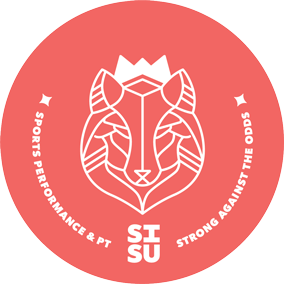So your low back “went out.” What now?
4 things you can do to get it back “in”
It’s a tale as old as time and the story goes a little something like this:
“So, I was deadlifting the other day, when I felt something happen in my lower back. I think I twisted funny or something, I’m not sure. The next day, I woke up and it was clear that my low back had gone out.”
To which I’ll shamelessly reply:
“Interesting, where do you think it went?”
Now, I know what you’re thinking:
“Wow, she’s such an asshole!”
I promise you, I am not. This metaphor is POWERFUL!! And not in a positive way.
If you take the situation at face value, you’ll realize that your back didn’t go anywhere at all. It is still in your body, it is still very much a part of YOU and it is exactly where it needs to be to start your healing process.
So before we delve into the secret life of treating low back pain, I hate to say it, but we absolutely need to reframe this metaphor and subsequently, this title:
So you have low back pain
4 things you can do to “treat” yo’ self
1. Deadlift
I’ve said it before, but I’m going to say it again: deadlifting is great self-treatment for low back pain.
The deadlift exercise fires all of those strong ass muscles in your back. The ones that love being pumped after injury.
Sometimes, right after an injury though, this particular exercise can be pretty sore and sensitive. That’s ok! It typically doesn’t mean that you are doing more harm to your lower back, it simply means that you are getting some feedback and to keep things in a comfortable zone, a safe zone for YOU.
“Deadlifting is great self-treatment for low back pain.” — Dr. Ellie Somers
A great way to deadlift after an injury is to lift at a weight you feel good and safe doing right away. There’s no pressure. It could be a good excuse to slow down a bit and give your body some much needed active recovery.
2. Work on Range of motion for your back
As you might with a sprained knee, working on range of motion after an injury is key to re-gaining functional movement. That means, moving around in all kinds of directions that might be painful or uncomfortable or uncertain.
And while pain is scary sometimes, pain itself isn’t dangerous and our nervous system responds quite well to gentle nudges into the pain immediately following an injury.
If you want to know what exercises I typically recommend for range of motion immediately following a back injury, sign up for the FREE back pain program below.
3. Get a massage
Sometimes sustaining an injury is a good opportunity to provide yourself and your body with some tender loving care. A massage can be incredibly relaxing to your body and to your soul. Find a professional to give you a nice rub, or ask a friend!
The only caveat I’d make about getting a massage immediately after an injury would be that it should feel REALLY good. For some, that means light pressure, for others heavy. Whatever your preference, be sure to communicate that. There is no reason to be tortured through massage.
4. Get back to your routines
Whenever possible, I encourage my clients to get back to their life as soon as possible after a low back injury.
This does a number of different things to foster healing and resilience. In the most basic sense, it teaches you that there is some semblance of control which can do wonders to calm down your nervous system and ultimately your pain.
And while everyone is going to be a little different as it pertains to getting back to activity, this is a very important step for many people when recovering from injury.
If you are still feeling uncertain about how to move forward or if your pain persists beyond a timeframe you feel acceptable, please feel free to reach out to me.
>> Sign up below to receive your free Back pain program! <<
Cheers,
Dr. Ellie Somers, DPT
“Shewolf on a mission”
Sisu Sports Performance & PT is accepting new clients!! Feel free to send me an email or schedule an appointment today!






